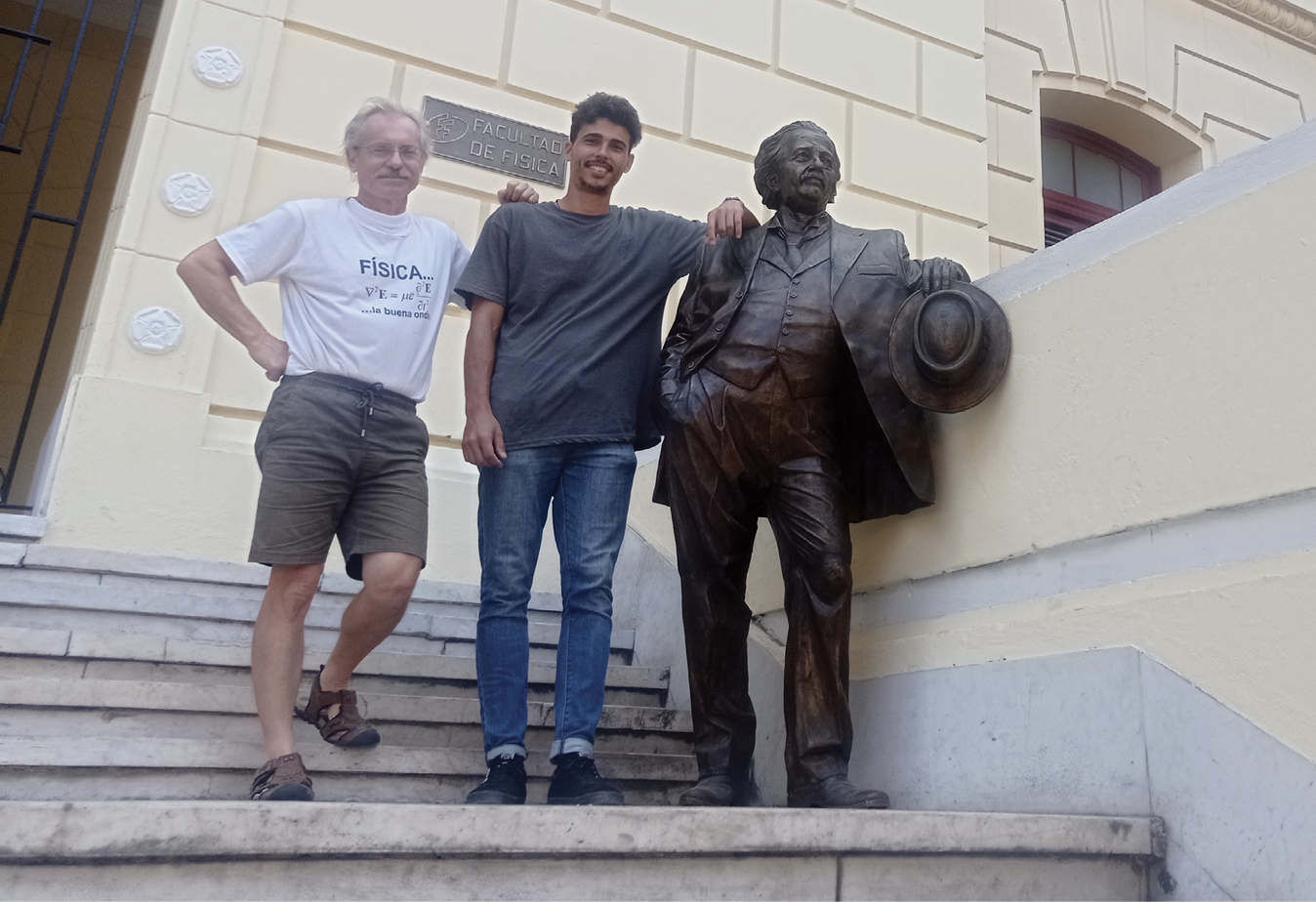Einstein statue unveiled in Havana
DOI: 10.1063/pt.upvp.xsiu
Ernesto Altshuler, a physics professor at the University of Havana in Cuba, got the idea for a statue of Albert Einstein while he was planning celebrations for the International Year of Physics in 2005. It was the centenary of Einstein’s annus mirabilis, when he published four groundbreaking papers. “I thought that a statue would be interesting both intrinsically and to attract students,” Altshuler says.

Albert Einstein is the newest fixture at the physics department at the University of Havana in Cuba. Physics student Diego Valdés (next to Einstein) helped cast the statue, which was the brainchild of physics professor Ernesto Altshuler (left). (Courtesy of Ernesto Altshuler.)

It took nearly two decades, but a life-size statue of Einstein now graces the entrance to the university’s physics department. It was inaugurated on 27 March.
The statue took so long to realize, Altshuler says, mostly because he wasn’t able to raise money for it. In late 2005 Altshuler took to the Web to vent his frustrations with a post he titled “A dream that didn’t come true.”
A dozen years later, in 2017, that vent caught the eye of Wolfgang Bietenholz, a physicist at the National Autonomous University of Mexico. “I thought the statue was a nice idea, and it was a pity if they couldn’t build it for lack of money,” he says. Bietenholz is originally from Switzerland and, as he puts it, “knew about foundations there that were looking for reasonable projects.” He played matchmaker, and an undisclosed foundation paid for the statue.
Once the money was secured, delays continued because of bureaucracy, the COVID-19 pandemic, and a dearth of materials needed to make the statue.
Havana sculptor José Villa Soberón took on the project. He is known internationally for statues of John Lennon, Gabriel García Márquez, Napoleon Bonaparte, and many others. Altshuler stood in as a model for Einstein’s body. The hat Einstein holds is based on a gift he received during his 1930 visit.
In a sweet twist, Diego Valdés, a physics student from the University of Havana, helped cast the statue. Villa Soberón had turned for help to Valdés’s father, a local sculptor who has a foundry. Valdés was involved throughout: casting wax, coating the wax cast with silica sand and plaster, melting the wax, pouring melted bronze into the resulting hollow mold, and touching up the details. The sculpture was cast in six pieces and later welded together, he says. “I thought it was great that we could cast a sculpture destined for my faculty at the university.”
The statue is attracting attention, says Altshuler. “Einstein is one of the few persons in modern history that everyone can recognize.”
More about the Authors
Toni Feder. tfeder@aip.org
